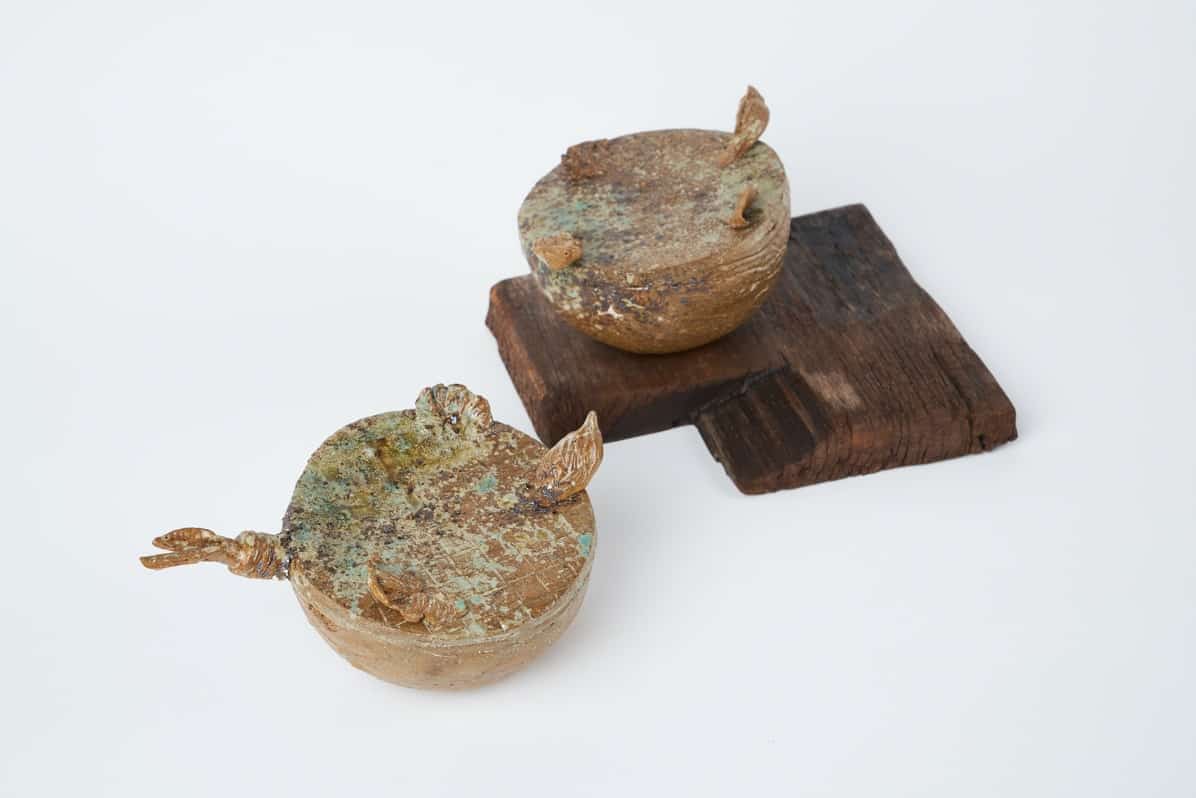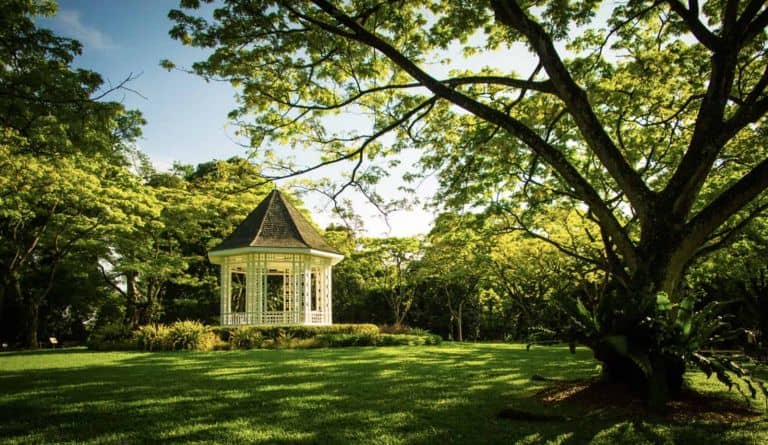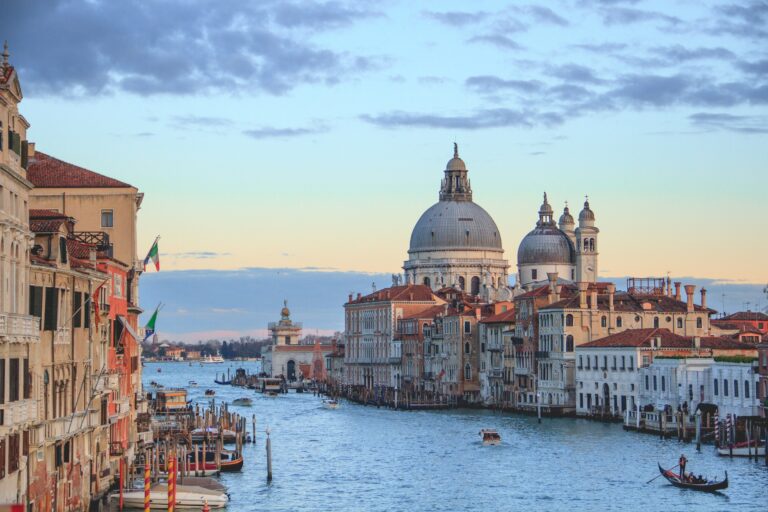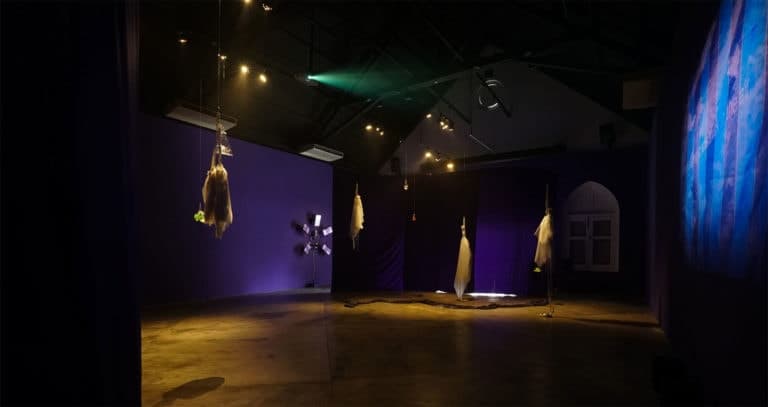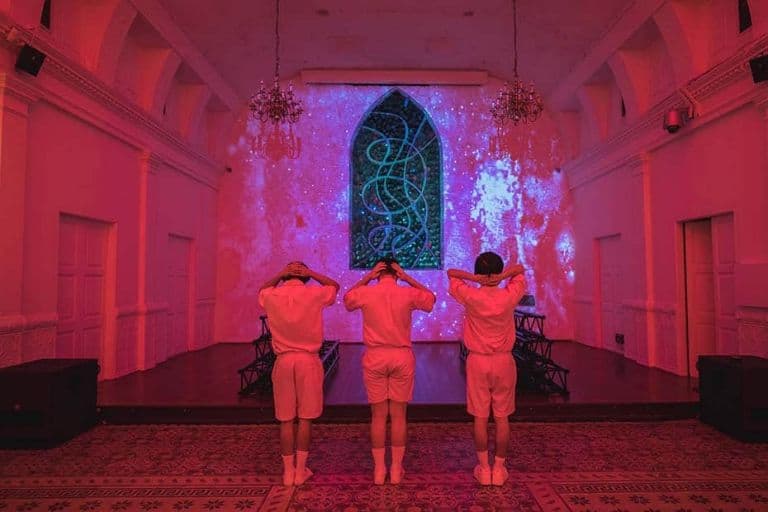If you’re looking to enter a peculiar world of magical beasts and starry constellations this Halloween, look no further than AC43 Gallery’s latest exhibition, Ancient Future Myths. This show, which features works by contemporary Singapore artists Ben Loong and Chua Chon Hee, will not disappoint.
Chua’s ceramics and wood carvings are curious – humorous even – to both the trained and untrained eye. They are gnarled and knobbly twisted sculptures, resembling anything from ancient amphoras to Harry Potter-esque golden snitches. One of them is even ‘trapped’ in a medicinal-looking glass bottle, evoking a sense of unexpected tension: is this thing going to fly out of the container if released?
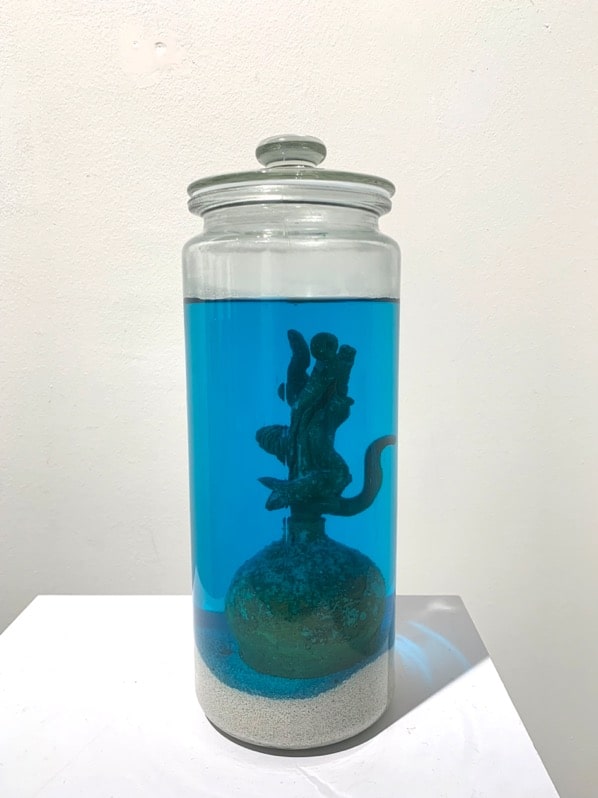
What is it even?
As it turns out, Hidden 潜藏 is a sea creature, and the work on display in the gallery is bathed in a mysterious aqua-blue liquid to hint at its origins.
Playful renditions of a mystical mythology
Students of Chinese literature may find an interpretive roadmap in the show catalogue, which explains that Chua has transformed the fantastical narratives of Chinese classic text the Shan Hai Jing (山海经, or The Classic of Mountains and Seas), as well as elements of Greek mythology, into the bold forms and sculptural vessels seen in Ancient Future Myths.
The Shan Hai Jing is a literary text providing a vast geographical account of China before the Qin dynasty. It covers more than 500 mountains and 300 seas, as well as descriptions of many animals and (supposedly) mythical creatures that inhabited these landscapes. Upon the advice of her friend and teacher the late Chng Seok Tin, Chua looked to the written text of the Shan Hai Jing and Greek mythology for inspiration to create her own playful ceramic renditions of ancient fabled sky and sea creatures.
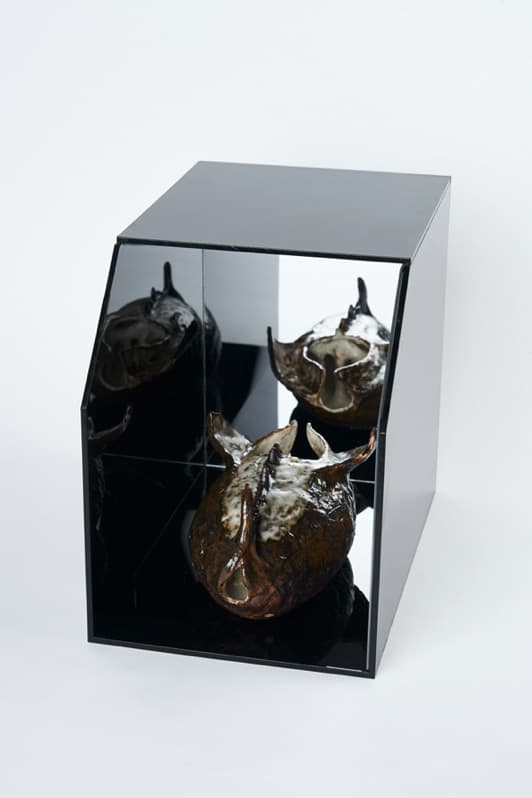
To those of us who may not be familiar with classical Chinese texts or interested in the genre at all, an exhibition like this may feel tiresome or overly academic at first glance. One might expect to miss out on many hidden details or secret codes, but gallery Marketing and Communications Manager Valerie Lim is quick to allay our fears.
She explains:
“The artist… does not expect viewers to pick up on her reading in order to relate to the works, as the text is expected to be arcane for most viewers, even amongst the Chinese audience. Rather, (Chua) hopes that her ceramic works are able to stand on their own aesthetically, and that viewers will walk away with an enhanced appreciation of the allure of clay.”
Indeed she is correct – we entered the show with no preconceived notions about Chinese literature (and certainly, minimal knowledge), but found the experience to be meaningful nonetheless. Chua’s fantastical creations are delightful and fun in their own right and part of the adventure lies in trying to decipher exactly what these creatures could be. For the more prosaic folks amongst us, rest assured, friendly gallery staff are on hand to share books and guides (both in Mandarin and in English) on the inspiration behind these works.
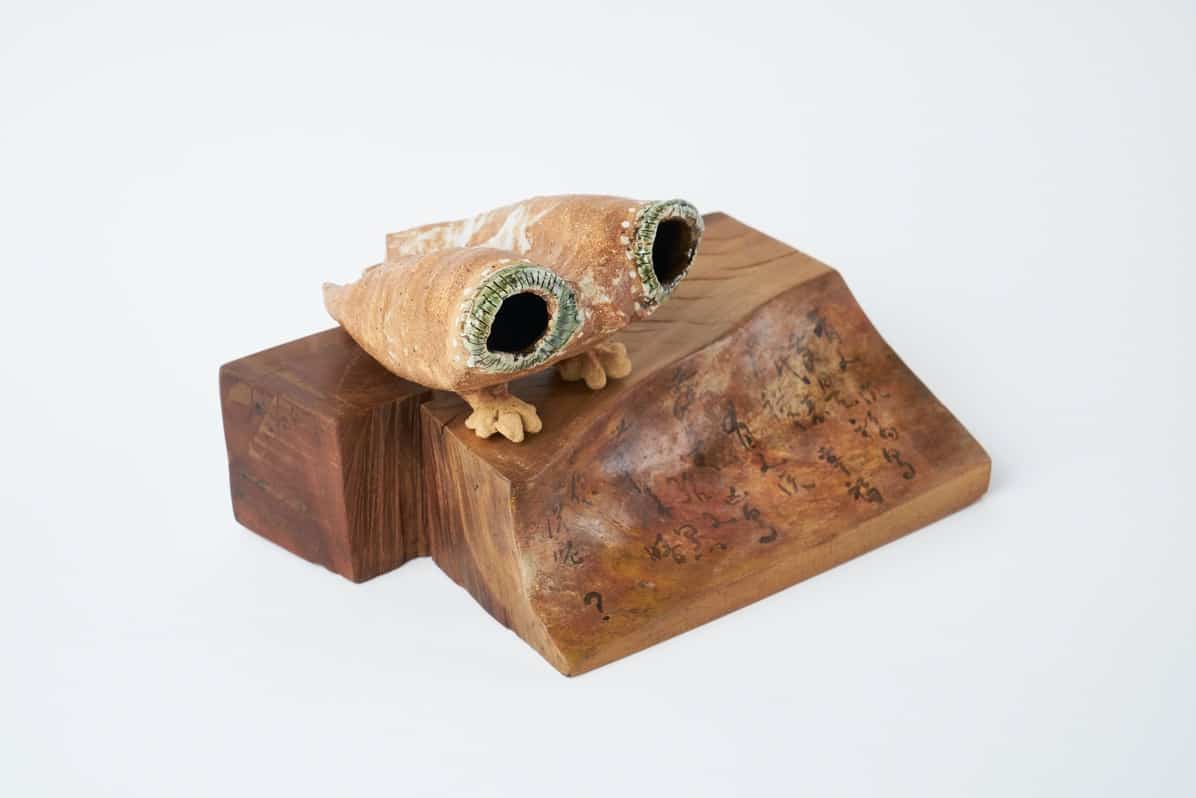
In her curatorial essay for the show, Valerie Lim explains that Chua’s series of prints titled To Probe 窥探 “playfully leads the eye to meander in and out of sinewy angles and shadowy entryways, where hidden worlds and alternate realities surface for the curious.”
In her print works, the artist employs different techniques, ranging from intaglio to mezzotint. The result is unusual shapes that look almost like in-vitro ultrasound images of her ceramic Shan Hai Jing creatures:
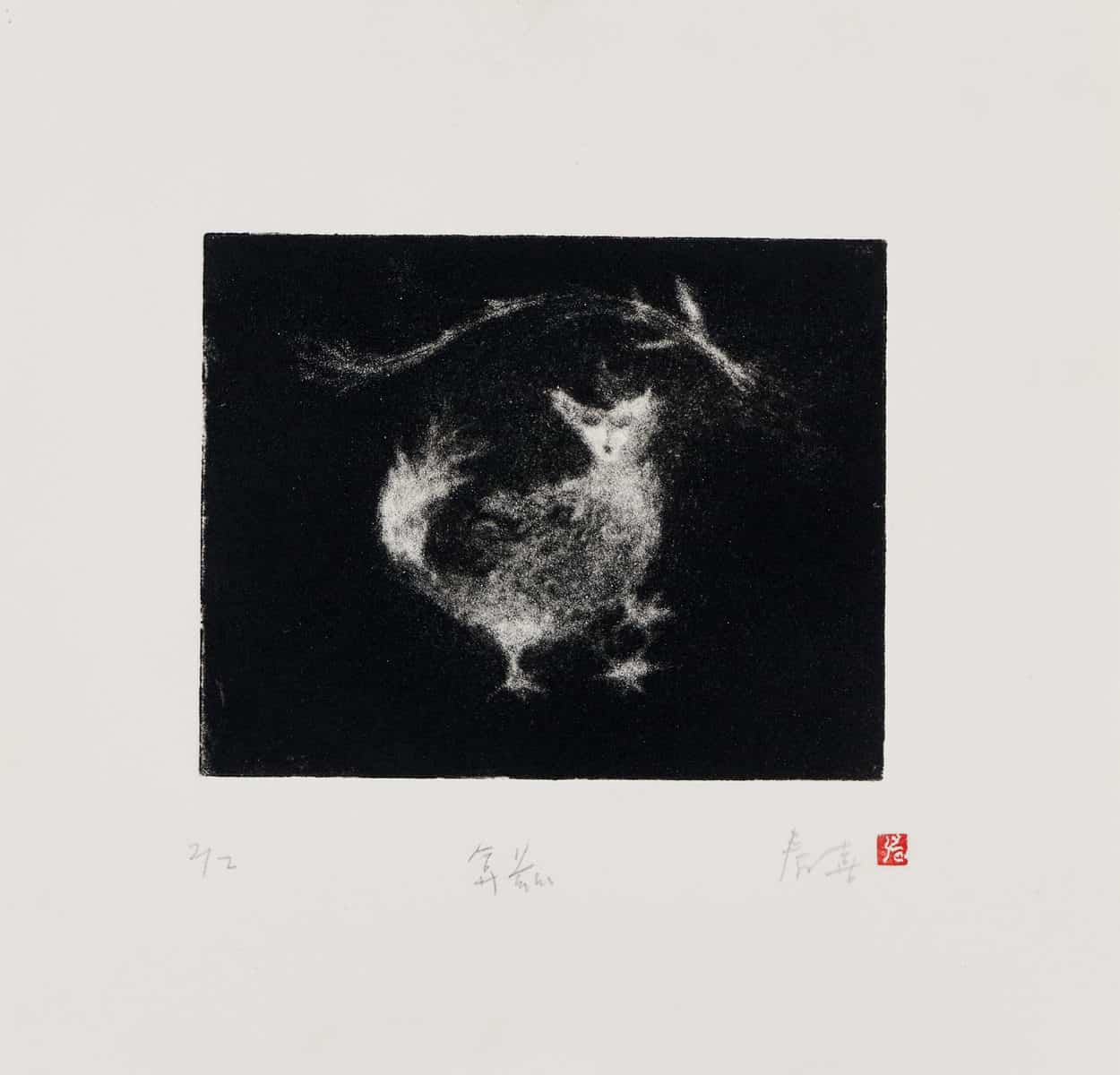
Constellations both mundane and ethereal
Moving on from Chua’s playful mythical animals, Ancient Future Myths launches us straight into the stars with Ben Loong’s latest series, Asterism.
Loong adopts common industrial materials to construct works of art which complicate the familiar notions of value and labour, leaving viewers to ponder their own respective positions in the creation and consumption of meaning (through art or otherwise).
Starstorm for example, is composed of pieced-together ragged fragments of ceramic tile, bone china and glazed stoneware to form a delicate and textured mosaic composition that resembles an ethereal celestial constellation.
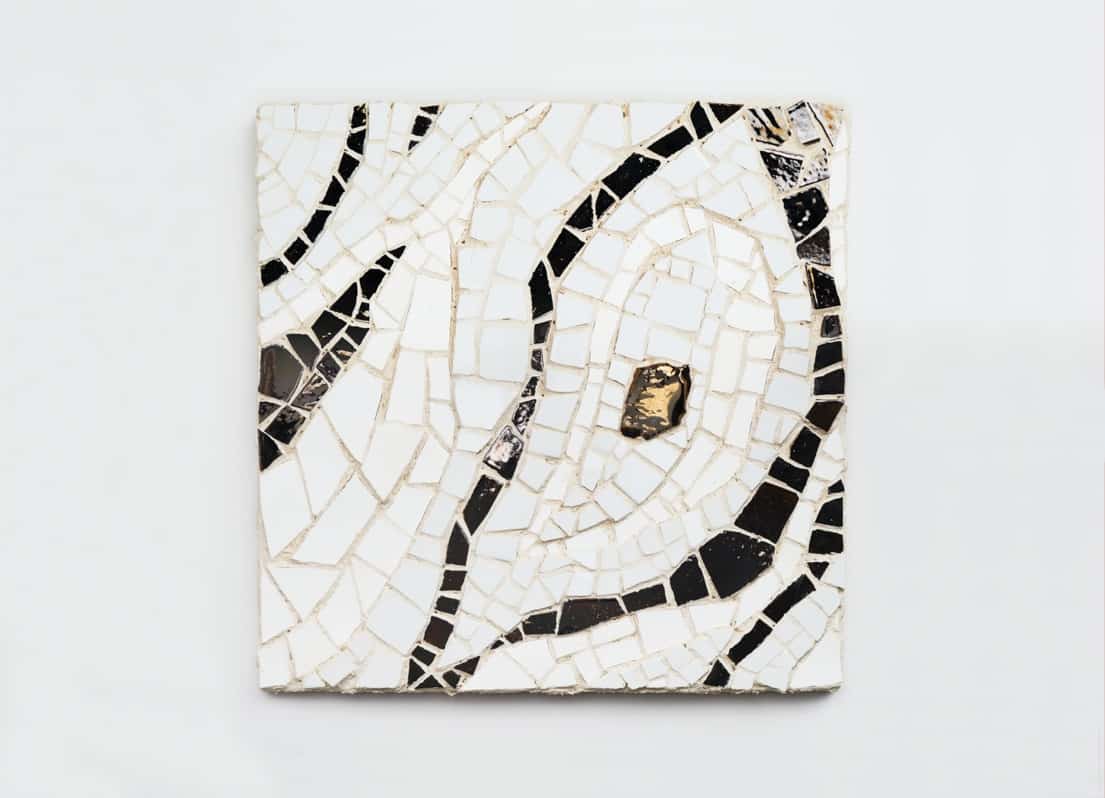
The piece takes on a different dimension when we learn that bone china was first invented in 18th-century England as a more affordable, hardier alternative to fine Chinese porcelain (bone china, in contrast to fine china, sees cow bone ash being mixed into the ceramic material). Widespread demand for bone china products eventually led to the invention of slip-casting as a means of ceramic mass production. Loong alludes to this industrial manufacturing process by adopting the slip-cast technique to create the bone china in his ceramic works.
There is tension here between the rough and the delicate, the smooth and the cracked, the mass-produced and the unique. Loong’s shiny white and gold mosaics are filled in with grout, the most quotidian of materials found in many households and construction sites, and his intense focus on materiality offers much food for thought.

The works cannot help but resonate with those of us trapped in the daily grind of a busy urban environment, while battling the stresses of a never-ending pandemic. These delicate, unique compositions of organic and industrial material juxtaposed against golden shimmery glaze and rough-hewn edges, prompt reflection on the vagaries of modern living. It feels as though Loong wants us to know that there is always quiet beauty to be found in the most unexpected of ways, no matter how rough or difficult things may be.
A study in contrasts
This exhibition is a meeting of minds in many different respects – Chua and Loong are from different generations (aged 61 and 33 respectively) and come from different art schools (Chua is from the Nanyang Academy of Fine Arts and Loong is from LASALLE College of the Arts). While Chua brings the skills of a confident craftsperson to the exhibition, Loong is more concerned with the conceptual meaning behind his choice of materials. Initially unfamiliar with each other’s practice, Loong and Chua were prompted to communicate during AC43 Gallery’s Watching Paint Dry initiative (see below for details). In the course of the project, the artists expressed a desire to exhibit their new works together, and Ancient Future Myths is the result of those dialogues.
Juxtaposed against one another, the works in this show invite viewers to consider ceramics beyond utilitarian forms of usage, and to reflect on the feelings which emerge when one encounters their intricate textures and sculptural outlines.
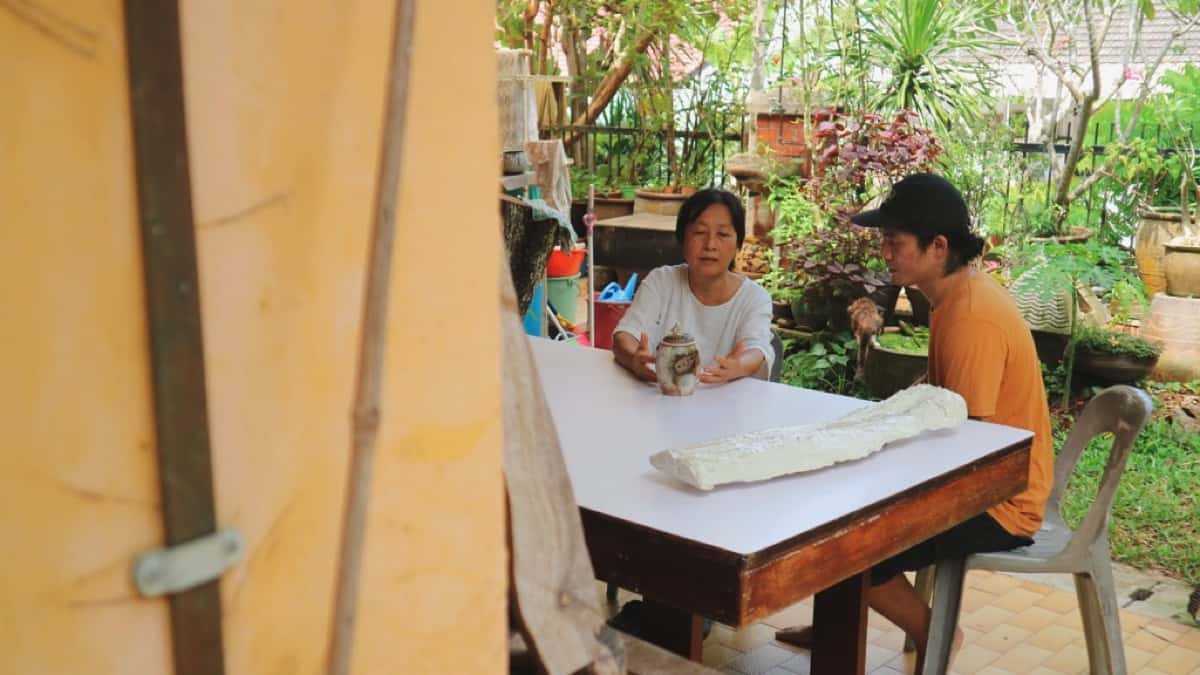
A collector’s note
From a collecting perspective, here’s a bit of interesting insight into AC43, the organiser of this exhibition: it grants buyers a relatively affordable entry point into the modern art-dominated world of artcommune gallery. AC43 is artcommune’s sister brand, one which is dedicated towards being a more experimental space for young and emerging artists in Singapore.
While its offerings tend to be narrative-driven, with its stable of younger collectors being more interested in the stories and working processes of artists, we are informed that collectors from artcommune gallery have been known to buy works listed in AC43’s inventory and vice versa.
Most of the works in Ancient Future Myths retail from between S$2000 – S$4000, with some pieces being available at under S$1000. That these works sit next to a gallery collection that includes paintings by Chen Wen Hsi, Cheong Soo Pieng and Ong Kim Seng, is a lovely inspirational nod to artcommune’s confidence in the future of the local art scene.
Ancient Future Myths runs till 31 October. Visit in your Halloween best!
____________________________________________________
Feature image: Chua Chon Hee, Chirp 啁啾 (2021). All images are courtesy of artcommune gallery and AC43 Gallery.
To view more artistic encounters between Chua Chon Hee and Ben Loong (as well as other cool artist pairings), check out AC43 Gallery’s Watching Paint Dry video series. The series was released between March to April 2021 and prompts artists at different stages of their careers to engage in dialogue with one another.
This article is produced in paid partnership with AC43 Gallery and artcommune gallery. Thank you for supporting the brands that support Plural.
